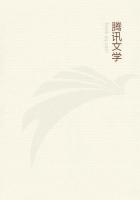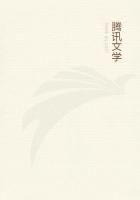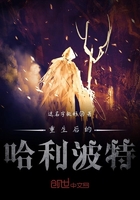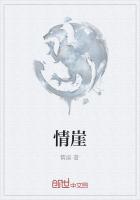1With regard to animals in general, some parts or organs are common to all, as has been said, and some are common only to particular genera; the parts, moreover, are identical with or different from one another on the lines already repeatedly laid down. For as a general rule all animals that are generically distinct have the majority of their parts or organs different in form or species; and some of them they have only analogically similar and diverse in kind or genus, while they have others that are alike in kind but specifically diverse; and many parts or organs exist in some animals, but not in others.
For instance, viviparous quadrupeds have all a head and a neck, and all the parts or organs of the head, but they differ each from other in the shapes of the parts. The lion has its neck composed of one single bone instead of vertebrae; but, when dissected, the animal is found in all internal characters to resemble the dog.
The quadrupedal vivipara instead of arms have forelegs. This is true of all quadrupeds, but such of them as have toes have, practically speaking, organs analogous to hands; at all events, they use these fore-limbs for many purposes as hands. And they have the limbs on the left-hand side less distinct from those on the right than man.
The fore-limbs then serve more or less the purpose of hands in quadrupeds, with the exception of the elephant. This latter animal has its toes somewhat indistinctly defined, and its front legs are much bigger than its hinder ones; it is five-toed, and has short ankles to its hind feet. But it has a nose such in properties and such in size as to allow of its using the same for a hand. For it eats and drinks by lifting up its food with the aid of this organ into its mouth, and with the same organ it lifts up articles to the driver on its back; with this organ it can pluck up trees by the roots, and when walking through water it spouts the water up by means of it; and this organ is capable of being crooked or coiled at the tip, but not of flexing like a joint, for it is composed of gristle.
Of all animals man alone can learn to make equal use of both hands.
All animals have a part analogous to the chest in man, but not similar to his; for the chest in man is broad, but that of all other animals is narrow. Moreover, no other animal but man has breasts in front; the elephant, certainly, has two breasts, not however in the chest, but near it.
Moreover, also, animals have the flexions of their fore and hind limbs in directions opposite to one another, and in directions the reverse of those observed in the arms and legs of man; with the exception of the elephant. In other words, with the viviparous quadrupeds the front legs bend forwards and the hind ones backwards, and the concavities of the two pairs of limbs thus face one another.
The elephant does not sleep standing, as some were wont to assert, but it bends its legs and settles down; only that in consequence of its weight it cannot bend its leg on both sides simultaneously, but falls into a recumbent position on one side or the other, and in this position it goes to sleep. And it bends its hind legs just as a man bends his legs.
In the case of the ovipara, as the crocodile and the lizard and the like, both pairs of legs, fore and hind, bend forwards, with a slight swerve on one side. The flexion is similar in the case of the multipeds; only that the legs in between the extreme ends always move in a manner intermediate between that of those in front and those behind, and accordingly bend sideways rather than backwards or forwards. But man bends his arms and his legs towards the same point, and therefore in opposite ways: that is to say, he bends his arms backwards, with just a slight inclination inwards, and his legs frontwards. No animal bends both its fore-limbs and hind-limbs backwards; but in the case of all animals the flexion of the shoulders is in the opposite direction to that of the elbows or the joints of the forelegs, and the flexure in the hips to that of the knees of the hind-legs: so that since man differs from other animals in flexion, those animals that possess such parts as these move them contrariwise to man.
Birds have the flexions of their limbs like those of the quadrupeds; for, although bipeds, they bend their legs backwards, and instead of arms or front legs have wings which bend frontwards.
The seal is a kind of imperfect or crippled quadruped; for just behind the shoulder-blade its front feet are placed, resembling hands, like the front paws of the bear; for they are furnished with five toes, and each of the toes has three flexions and a nail of inconsiderable size. The hind feet are also furnished with five toes; in their flexions and nails they resemble the front feet, and in shape they resemble a fish's tail.
The movements of animals, quadruped and multiped, are crosswise, or in diagonals, and their equilibrium in standing posture is maintained crosswise; and it is always the limb on the right-hand side that is the first to move. The lion, however, and the two species of camels, both the Bactrian and the Arabian, progress by an amble; and the action so called is when the animal never overpasses the right with the left, but always follows close upon it.
Whatever parts men have in front, these parts quadrupeds have below, in or on the belly; and whatever parts men have behind, these parts quadrupeds have above on their backs. Most quadrupeds have a tail; for even the seal has a tiny one resembling that of the stag.
Regarding the tails of the pithecoids we must give their distinctive properties by and by animal All viviparous quadrupeds are hair-coated, whereas man has only a few short hairs excepting on the head, but, so far as the head is concerned, he is hairier than any other animal. Further, of hair-coated animals, the back is hairier than the belly, which latter is either comparatively void of hair or smooth and void of hair altogether. With man the reverse is the case.

